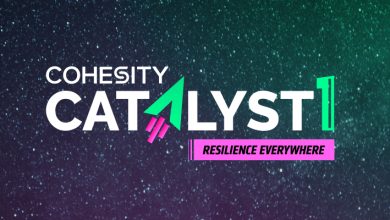Unveiling Deepfake Dangers to the 2024 Elections

In an age where digital innovation profoundly influences every aspect of our lives, the integrity of democratic processes stands at a pivotal crossroads. This era ushers in not just technological advancements but also a sophisticated mechanism of deception, masterminded by unseen actors who manipulate the digital landscape to challenge the very foundation of democracy. As nations worldwide brace for upcoming elections, we confront a new and unprecedented risk that transcends mere technological abuse—the potential for election fraud through the adept use of artificial intelligence and deepfake technologies, orchestrated by a clandestine network operating from the shadows.
CheckPoint’s extensive research peels back the layers of this digital underworld, revealing a surge in the availability of deepfake services on the darknet and Telegram. This phenomenon is not the work of lone wolves but a coordinated effort by a shadowy network of scammers and hackers, who leave no digital fingerprints, operating with impunity behind keyboards and screens. Their actions weave a complex web of misinformation and manipulation, significantly complicating efforts to safeguard electoral integrity and maintain the public’s trust in the democratic process.
The Deepfake Challenge
Deepfake technology allows for the creation of hyper-realistic but entirely fabricated audiovisual content, offering a powerful tool for those looking to manipulate public opinion or discredit political figures. The simplicity of accessing and using these services underscores a growing threat not only to the fairness and transparency of elections but also to the foundational trust upon which democratic institutions are built.
On platforms such as GitHub, there are over 3,000 repositories related to deepfake technology, indicating its widespread development and distribution potential. Telegram hosts hundreds of channels (approximately 400-500) and groups offering deepfake services, ranging from automated bots guiding users through the process to personalised services provided directly by individuals. The pricing for these services varies, starting as low as US$2 per video, and reaching up to US$100 for multiple videos and attempts, making it alarmingly affordable to commission deceptive content.
Open Sources Tools:
.png)
Only in GitHub, the largest web-based platform for hosting and managing code repositories, collaboration and version control for development projects, there were over 3,000 repositories that are related to deepfake.
.png)
Telegram Bot for Deepfake
.png)
Telegram service Chat for Deepfake
Pricing
Prices are ranging from US$2 / per video and can reach up to US$100 for multiple videos and attempts.
.png)
Pic from https://t.me/DeepFakeMe01Bot
.png)
Pic from https://t.me/fakelab_bot
.png)
Pic from https://t.me/DeepPaintBot
Beyond Technology: Unmasking the Invisible Architects of Election Deception
To fully grasp the imminent threat posed by deepfake technology in the upcoming 2024 elections, it is crucial to recognise that this is not solely a challenge of technological sophistication but a manifestation of a broader, more insidious mechanism of deception. Behind the screens, an underground network of actors operates, leveraging these technologies not merely as tools but as weapons in a comprehensive strategy to undermine democratic integrity. This shadowy mechanism, orchestrated with a few clicks, manipulates public perception and consciousness with chilling efficiency, all while its perpetrators remain shrouded in anonymity, leaving virtually no digital fingerprints.
The crux of this menace lies not just in the availability of deepfake technology but in the malicious intent of those wielding it. These individuals, groups or even nation state actors, often invisible and untraceable, exploit the digital realm’s anonymity to conduct their operations, making it exceedingly difficult to hold anyone accountable. The democratisation of deepfake technology has armed them with the capability to create convincing falsehoods, propelling misinformation to new heights of believability and impact. This anonymity emboldens threat actors, providing a shield behind which they can execute their campaigns of misinformation without fear of repercussion. The convincing nature of such realistic deepfake videos can lead to the embedding of false sentiments, perceptions, and beliefs in the minds of the public upon initial viewing, despite later revelations of their falsity. This can result in significant damage to the integrity of the entire process.
Moreover, the absence of digital fingerprints complicates the task of combating these deceptive practices. Traditional cybersecurity measures fall short when there are no clear digital trails to follow, no IP addresses to blacklist, or no straightforward malware signatures to detect. The battleground has shifted from one of technical countermeasures to a more complex arena of psychological warfare and public awareness.
The real danger, therefore, is not merely the technology but the entire ecosystem of deception it enables. This ecosystem operates through an intricate web of bots, fake accounts, and anonymised services, all designed to produce, amplify, and distribute fabricated content. It is a form of guerrilla warfare in the digital age, where the attackers, invisible and elusive, manipulate not just information but the very fabric of reality as perceived by the electorate.
The Rise of Voice Cloning
Voice cloning represents a significant subset of deepfake technology, utilising machine learning and artificial intelligence to replicate a person’s voice with remarkable accuracy. This technology analyses audio samples to learn the characteristics of the target voice, such as pitch, tone, and speaking style. It can then generate new speech that mimics these nuances, making it possible to create convincing fake audio clips.
These audio deepfakes can be particularly effective in spreading misinformation, as demonstrated by incidents involving robocalls with fabricated messages from political leaders. Unlike video deepfakes, which require complex manipulation of visual data, audio deepfakes are significantly easier to produce and share, posing a substantial risk in misleading voters and undermining confidence in the electoral process.
One of the recent examples is a robocall to New Hampshire voters with a fake US President Joe Biden voice, telling voters not to cast their ballot. “Although the voice in the robocall sounds like the voice of President Biden, this message appears to be artificially generated based on initial indications,” the AG’s office said in a statement.
On different platforms , prices may start from about US$10 per month and up to several hundred dollars depending on provided features such as Real-time Speech to Speech, Lower Latency or API access at only US$0.006 per second of the generated voice.
.png)
*Source: Telegram
Legislative Responses and Future Implications
Amid this example and the rise of voice cloning, the US has banned AI-generated voice robocalls.
“Bad actors are using AI-generated voices in unsolicited robocalls to extort vulnerable family members, imitate celebrities, and misinform voters. We’re putting the fraudsters behind these robocalls on notice,” the Federal Communications Commission said.
This step reflects the growing concern over digital manipulation and its impact on electoral integrity. However, the continual evolution of deepfake technology and its applications highlights the ongoing battle between technological advancement and ethical governance.
As we delve deeper into the implications of deepfakes for the 2024 elections, it becomes clear that safeguarding democratic processes in the digital age requires a multifaceted approach. This includes not only legislative measures but also public awareness, technological solutions, and international cooperation. The challenge lies not just in combating the technology itself but in preserving the trust and confidence essential to democratic societies.
The emergence of deepfake technology as a tool for election interference underscores a critical juncture for democracies worldwide. As we approach the 2024 elections for multiple countries around the world in Asia, Europe and the US, the need for vigilance and proactive measures has never been more pressing. The integrity of democratic processes—and the trust of the electorate—hangs in the balance, demanding a concerted effort from all stakeholders involved.
It is also imperative to look beyond the technological aspects and address the human element behind these operations. This entails not only enhancing our digital literacy and critical thinking skills but also fostering a culture of scepticism and verification. Public awareness campaigns, education initiatives, and community engagement are essential to equip citizens with the tools needed to discern truth from deception. Additionally, collaboration between technology companies, law enforcement, and cybersecurity experts is crucial in developing more sophisticated methods of detecting and neutralising these threats.
Prevention
-
Stay vigilant about the content you interact with. Consider its origins: Where did it come from? Is there an encouragement to share it further? Does it evoke a strong emotional response? Are you prompted to make a financial contribution?
-
Exercise caution and verify any links that come your way.
-
Rely exclusively on information from reputable and official sources.
-
Pay attention to the dates on content to avoid circulating outdated or irrelevant news.
-
Avoid opening emails or attachments from unfamiliar sources or individuals. Refrain from engaging with or responding to unsolicited emails.




